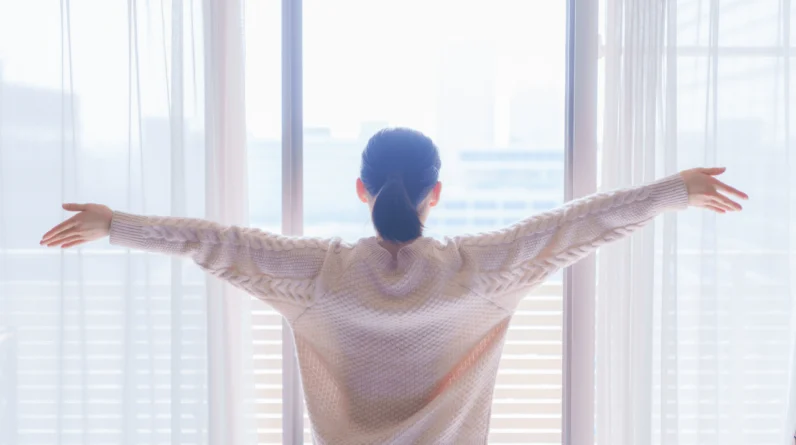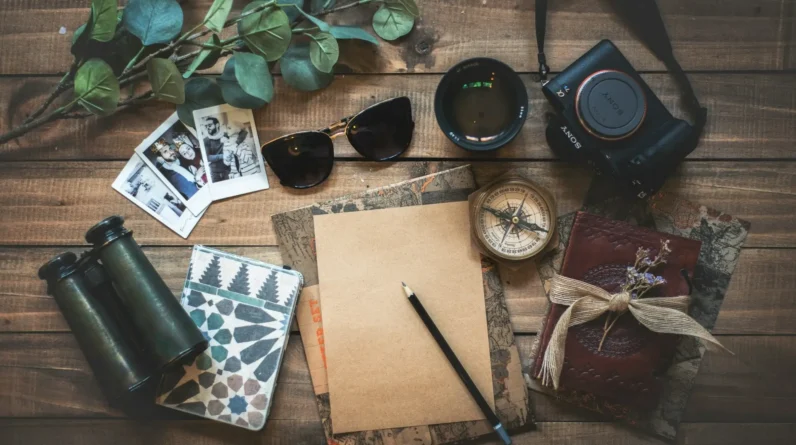
Art and spirituality are like two sides of the same coin, each reflecting and enhancing the other.
Art has been a fundamental part of human culture since the dawn of time. From the ancient cave paintings of Lascaux to the modern masterpieces hanging in museums today, art captures our experiences, dreams, and emotions.
On the other hand, spirituality is our quest for meaning, connection, and understanding beyond the physical world. It’s about finding peace, joy, and a sense of purpose.
When we look at a beautiful painting or listen to a moving piece of music, we often feel something deeper stirring inside us. That’s the magic where art meets spirituality.
Creating art is more than just making something beautiful; it’s a way to discover yourself.
Art and Spirituality
The connection between art and spirituality is like a dance, each movement complementing the other.
Think about it: when you engage with art—whether creating it or experiencing it—you’re often transported to a different state of mind. You might feel a sense of calm, a burst of inspiration, or a deep emotional release.
This is similar to how spiritual practices work. Meditation, prayer, and other spiritual activities aim to elevate our consciousness and connect us to our inner selves and the universe.
The act of creating art can be meditative, allowing us to focus deeply and let our subconscious flow onto the canvas. It’s a way to explore our thoughts and emotions, leading to greater self-awareness and spiritual insight.
Psychological and Philosophical Connections
The creative process in art is a journey from inspiration to expression.
It’s the series of steps an artist takes to turn an idea or emotion into a piece of art. This usually starts with a spark of inspiration, then can move to brainstorming, sketching, and trying out different techniques and materials. Finally, it results in a finished work that shows the artist’s vision.
Creating art is more than just making something beautiful; it’s a way to discover yourself.
As artists work on their projects, they explore their inner thoughts, feelings, and experiences. This can uncover hidden parts of themselves, giving them new insights and understanding. Making art allows people to express emotions they might not be able to say with words, helping them connect more deeply with their true selves.
Many artists view their work as a spiritual journey.
For example, Vincent van Gogh often painted to convey his emotional and spiritual struggles, using color and brushstrokes to express his inner turmoil and hope. Similarly, Frida Kahlo’s artwork was a means of exploring her identity and personal pain, turning her canvases into mirrors of her soul.
These artists, among others, see the creative process as a way to connect with something greater than themselves, making art a path to spiritual enlightenment and self-realization.
Art as a Form of Meditation
Creating and experiencing art can be a deeply meditative activity.
When we engage in art, whether through painting, drawing, sculpting, or even just observing, we often enter a state of flow. This is a mental state where we are fully immersed in the activity, losing track of time and becoming entirely focused on the present moment.
This immersive focus is similar to the state achieved through traditional meditation practices.
Art helps us practice mindfulness and stay present by making us focus on what we are doing, thinking, and feeling. When we create art, we pay attention to colors, textures, and the movements of our hands.
This focus helps calm our minds and reduce stress. Looking at art or listening to music also lets us slow down and fully appreciate the details and emotions the artist is sharing.
This mindful attention keeps us in the moment and improves our awareness and connection to what is happening right now.
There are several ways to use art as a form of meditation.
One easy method is mindful drawing or coloring, where you focus on the repetitive motion of the pen or brush and watch the artwork slowly take shape.
Another method is creating mandalas, which means drawing or coloring detailed circular designs. Mandalas are often used in many cultures for meditation and spiritual growth.
The Role of Symbols and Archetypes
Symbols and archetypes are key in art, conveying deep meanings and universal experiences.
Symbols, like objects or colors, represent ideas, while archetypes are recurring themes that reflect human nature. Together, they help artists express complex emotions.
For example, a dove symbolizes peace, and a serpent can mean danger or transformation.
Archetypes like the hero or the mother appear in many cultures, embodying fundamental human experiences. These elements connect personal feelings to universal themes.
Artists like Gustav Klimt and Salvador Dalí used symbols to explore spiritual ideas.
Klimt’s tree of life symbolizes growth, while Dalí’s melting clocks represent the idea that time is not permanent. Indigenous art often includes animal symbols with spiritual meanings. These artworks encourage viewers to think about deeper meanings and spiritual connections.
Art Therapy
Art therapy is a type that uses the creative process of making art to help improve a person’s physical, mental, and emotional well-being.
It’s based on the idea that creating art can be healing and life-enhancing. In art therapy, people use art to express themselves, explore their emotions, and work through unresolved conflicts or trauma.
There are many benefits to art therapy.
- Making art helps people communicate feelings they might not be able to put into words, giving them a safe way to express their emotions.
- Doing artistic activities can reduce stress, improve mental clarity, and give a sense of accomplishment.
- Reflecting on their artwork can also lead to spiritual growth, helping people connect with their inner selves and find meaning and purpose.
This process can promote healing by allowing individuals to explore and resolve deep-seated issues.
Ways to Integrate Art and Spirituality in Daily Life
Engaging in art as a personal spiritual practice can be deeply fulfilling and transformative.
Creating art allows you to express your innermost thoughts and feelings, providing a pathway to self-discovery and spiritual growth.
Whether you’re painting, drawing, sculpting, coloring or engaging in any other form of artistic expression, the act of creating can become a meditative experience.
It’s about the process, not the end product.
Allow yourself to be free and spontaneous, letting your intuition guide you. This can help you connect with your inner self and the larger universe, fostering a sense of peace and purpose.
Suggestions for Simple Art Activities that Promote Spiritual Connection
Journaling with Art: Combine written reflections with sketches, doodles, or collages. Use this as a daily practice to explore your emotions and spiritual insights.
Mindful Coloring: Use coloring books or create your own patterns and mandalas. Focus on the colors and shapes, allowing the repetitive motion to bring you into a state of mindfulness.
Nature Art: Collect natural materials like leaves, flowers, and stones to create art. This can help you feel more connected to the earth and the cycles of nature.
Intuitive Painting: Without a plan, start painting and see where your intuition takes you. Use this as a way to let go of control and trust the creative process.
Viewing Art with a Spiritual Lens
When visiting museums, galleries, or any space displaying art, approach the experience with a mindful and open heart.
Take your time with each piece, allowing yourself to feel the emotions and thoughts it evokes. Look beyond the surface to see the deeper messages and spiritual themes the artist might be conveying. Consider visiting during quieter times to avoid distractions and immerse yourself fully in the experience.
Questions to Ask Yourself When Viewing Art to Deepen Spiritual Understanding
- “What emotions does this piece evoke in me?”
- “What symbols or motifs stand out, and what might they represent?”
- “How does this artwork relate to my own spiritual journey or beliefs?”
- “What message or lesson do I think the artist is trying to communicate?”
Community and Collaborative Art
Creating art within a community can amplify its spiritual benefits.
Sharing the creative process with others fosters a sense of connection and belonging. It can also provide a space for mutual support and inspiration, helping individuals to grow spiritually together.
Community art projects can become a shared ritual, where the collective energy and intention elevate the experience for everyone involved.
Examples of Community Art Projects with Spiritual Themes
Mural Painting: Collaborate with others to create a mural that reflects shared spiritual values or community aspirations. The process of designing and painting together can be deeply bonding and meaningful.
Art Circles: Gather regularly with a group to create art together, share your work, and discuss its spiritual significance. This can be done in person or virtually.
Public Installations: Participate in or organize community art installations that invite viewers to reflect on spiritual themes like peace, unity, or the environment.
Art and Rituals
Art can enhance the beauty and depth of spiritual rituals.
Whether you are practicing alone or with a group, integrating art can make rituals more engaging and meaningful. Create visual representations of your intentions, prayers, or meditations to give form to your spiritual practices.
Ideas for Using Art to Enhance Spiritual Ceremonies and Practices
Altar Creation: Design and decorate a personal altar with meaningful symbols, images, and objects. This can serve as a focal point for meditation and prayer.
Ritual Art-Making: During spiritual ceremonies, set aside time for participants to create art that represents their intentions or reflections. This can be done with simple materials like paper and markers or more elaborate setups.
Seasonal Celebrations: Mark the changing seasons with communal art projects, such as creating seasonal decorations or collaborative pieces that honor the cycles of nature.
Meditative Drawing: Integrate drawing or painting into your meditation practice. Start your session with a few minutes of creating art to center your mind and set the tone for deeper meditation.
By weaving art into your daily spiritual practices, you can cultivate a richer, more connected, and fulfilling spiritual life.
Art and Spirituality: A Path Toward Peace & Joy
Art and spirituality, when intertwined, offer a profound pathway to understanding and enriching our inner lives.
As we’ve explored, the act of creating art can be:
- a journey of self-discovery
- a meditative practice
- a way to connect with universal human experiences through symbols and archetypes
Art therapy demonstrates the healing potential of this connection, offering tangible benefits for emotional and spiritual growth.
I encourage you to take the insights and practices discussed and explore them in your own life. Whether you’re an artist, an art lover, or someone new to both, there are countless ways to deepen this connection!
Try incorporating simple art activities into your daily routine, visit museums with a mindful approach, or participate in community art projects. Each step you take can open new doors to self-awareness and spiritual enrichment.
Photo by Karolina Kaboompics







